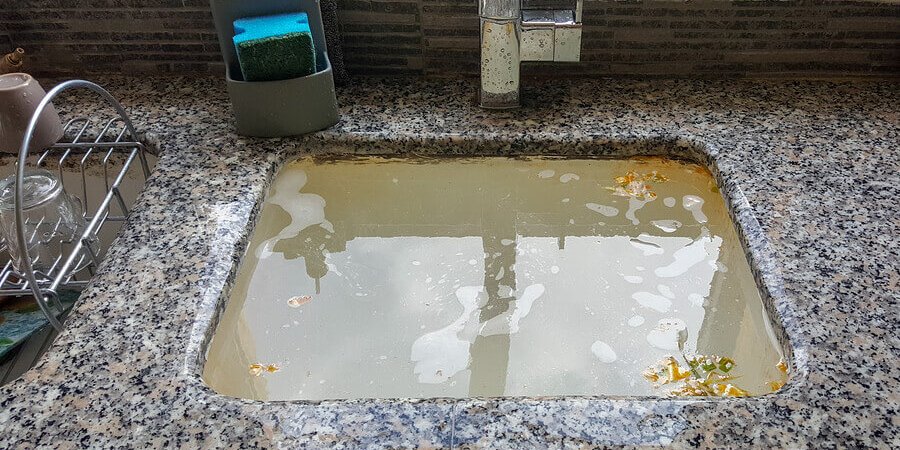We have encountered this great article relating to What I learned from trying to deal with a clogged drain down the page on the net and thought it made good sense to discuss it with you here.

Intro
Dealing with a blocked drainpipe can be an aggravating experience, disrupting everyday tasks and possibly creating damages to your residential property. Nevertheless, before reaching out to plumbing specialists, there are actions you can require to address the concern on your own. In this overview, we'll discover DIY solutions and preventive measures to tackle a blocked drainpipe successfully.
Determining the Problem
The primary step in dealing with a blocked drainpipe is acknowledging the signs. Slow-moving drain, gurgling sounds, foul odors originating from drains pipes, or water backing up are common indications of an obstructed drainpipe. Determining these indicators early can assist avoid further complications.
Usual Reasons For Obstructed Drains
Understanding the aspects that contribute to drain pipes obstructions is necessary for effective resolution. Typical perpetrators consist of hair, soap residue, grease, food particles, and international items like hygienic items or paper towels. Tree origins invading underground pipes can also trigger considerable obstructions.
Do it yourself Solutions
For minor obstructions, a number of do it yourself remedies can be reliable. Putting boiling thin down the drainpipe can help dissolve oil and particles. Sodium bicarbonate and vinegar or a combination of salt and cooking soft drink can function as natural cleaners. Making use of a bettor or plumbing snake to dislodge obstructions is an additional option.
Tools and Tools
Having the right devices available can make do it yourself drainpipe cleaning much more effective. A bettor is a functional device for clearing clogs in sinks, bathrooms, and showers. A pipes snake or auger can reach much deeper obstructions, while drainpipe cleaning chemicals can be used very carefully for stubborn blockages.
Safety nets
To prevent future obstructions, adopting safety nets is critical. Mount drain guards or strainers to capture hair and particles prior to they get in the pipelines. Consistently flush drains pipes with hot water to liquify oil build-up, and prevent taking care of grease or strong waste down the drain.
When to Call a Specialist
While DIY options can deal with small clogs, particular indications indicate the need for specialist support. Consistent clogs, foul odors despite cleansing efforts, or numerous drains pipes backing up concurrently are red flags that require expert treatment.
Picking the Right Plumbing Service
When picking a pipes service, think about variables such as experience, licensing, and customer reviews. Pick a trustworthy plumber with a record of quality workmanship and transparent prices methods.
Expense Factors to consider
The expense of specialist drainpipe cleaning services can differ relying on the severity of the obstruction and the plumbing technician's prices. Demand quotes from numerous providers and ask about any type of service charges to make certain openness and prevent shocks.
Security Measures
When attempting DIY drain cleaning, focus on safety. Put on safety handwear covers and eyeglasses to prevent contact with damaging chemicals or microorganisms. Never ever blend various drain cleansing items, as this can create dangerous fumes.
Instance Studies
Real-life instances illustrate the efficiency of do it yourself options and the significance of prompt specialist treatment in solving drainpipe obstructions.
Conclusion
By adhering to the ideas laid out in this overview, you can efficiently tackle obstructed drains and protect against future pipes issues. Whether going with DIY services or looking for professional support, prompt action is vital to keeping a healthy and balanced plumbing system and preserving the honesty of your home.
How to Clear a Clogged Drain Yourself (And When to Call In the Professionals)
What Can Clog a Drain
Dirt Skin flakes Hair Grease Soap scum Food Offset pipes Tree roots Small objects Mineral buildup DIY Tricks to Unclog a Drain
You can fix this! Once you have identified the source of the clog (or have a vague idea), you can try one or a combination of these fixes in order to clear your plumbing.
Wire Hanger or Snake
Untangle and clear out hair from a drainpipe with a homemade snake. Use a straightened-out wire hanger with a 90-degree angle hook to locate the clog and drag out any unwanted material.
Remember not to push the clog further down to where the wire hanger cannot reach! If you need to follow up with a plunger, give it a try. Your efforts might be more successful after it’s been wire-snaked.
If you want to get fancy and don’t have a wire hanger to spare, head to the store and pick up a hand-operated drain snake. You can get one for $10-$30. It may save you the hassle, and provide additional length to reach deep into the clogged pipe.
Plunger
A cup plunger has a suction cup attached to a wooden handle. The rubber creates a seal around the drain, and increases the pressure force of the plunger.
Plunge for 30-second increments to loosen the clog. This may need to be repeated over the course of 15-20 minutes. Once plunged, run the water to flush the remaining material out of the drain.
Remember– never use a plunger if you have used a chemical drain cleaner. These chemicals can splash up from the force of the plunger and cause serious injury or burns.
Boiling Water
Hot water can sometimes break up materials into a flushable amount. Dirt, grease, and soap buildup requires heat in order to unstick from surfaces.
Take your kitchen kettle and heat your water to a boil. Once it reaches a rolling boil, pour it directly down the drain into the blockage. Carefully follow with plunging, if necessary.
Don’t worry if this takes more than one try! It can often take multiple kettles and repeated plunging in order to clear a particularly stubborn clog.
Chemical Drain Cleaner
As a last resort, pick up a bottle of chemical drain cleaner. Drain-cleaning chemicals are potent, and not very good for the environment.
You may need to wear protective eyewear in gloves before handling your bottle of chemical drain cleaner. Follow the instructions printed on the bottle, and flush with water as soon as the instructions allow. Do not follow with plunging.
Baking Soda and Vinegar
As a safer alternative to chemical drain cleaner, baking soda and vinegar can create a chemical reaction that clears tough clogs.
Combine one cup of cleaning vinegar with one cup of boiling water, and set aside. Once you have done this, pour half a cup of baking soda down the drain. Give the baking thirty seconds to settle and cover a large portion of the problem drain.
Following the baking soda, pour down your vinegar and hot water solution. Once the vinegar and baking soda combine, the mixture will bubble and fix. Let this reaction fizzle in the drain for about an hour.
After an hour, follow with a kettle’s worth of hot water. The heat and liquid should flush out any remaining material.
When to Call a Plumber
If your DIY attempts haven’t cleared your clog drain, it’s time to call in a professional. It’s not worth losing access to your kitchen sink or high-traffic bathroom. A clog in a vital area can keep you from the things you’d rather be doing, and derail your routine.
Anytime a clog is causing water to spread is a time to call in a plumbing service. What starts out as a little bit of water can quickly grow into serious, expensive water damage.
Additionally, a serious clog can result in burst pipes or serious leaks. Make sure you know when to take it seriously!
https://myguysnow.com/how-to-clear-a-clogged-drain-yourself-and-when-to-call-in-the-professionals/

As an avid reader about What I learned from trying to deal with a clogged drain, I think sharing that excerpt was a great idea. Remember to take a moment to promote this blog if you liked it. We value reading our article about 8 Tips For Clearing A Blocked Drain.
Call Today
 Luke Perry Then & Now!
Luke Perry Then & Now! Josh Saviano Then & Now!
Josh Saviano Then & Now! Jane Carrey Then & Now!
Jane Carrey Then & Now! Catherine Bach Then & Now!
Catherine Bach Then & Now! Nadia Bjorlin Then & Now!
Nadia Bjorlin Then & Now!